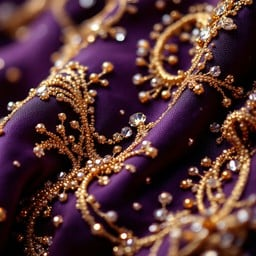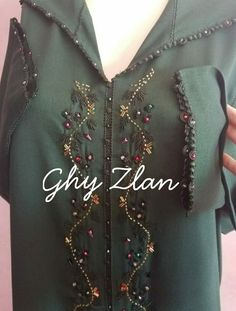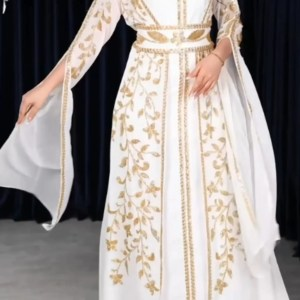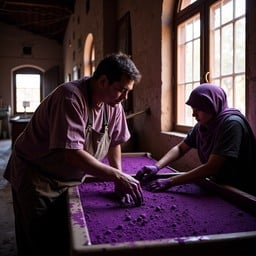- Published on
The Intricate Beauty of Moroccan Embroidery A Timeless Tradition
- Authors

- Name
- Adil ABBADI
Introduction

Moroccan embroidery is an art form that has been passed down through generations, weaving together the country's rich cultural heritage with vibrant colors and intricate techniques. From the intricate geometric patterns to the majestic Arabic calligraphy, every stitch tells a story of tradition, identity, and community. In this article, we'll delve into the world of Moroccan embroidery, exploring its historical significance, traditional techniques, and modern adaptations.
- Historical Significance
- Traditional Techniques
- Modern Adaptations
- Cultural Preservation
- Conclusion
- Cultural Call-to-Action
Historical Significance
Moroccan embroidery has its roots in the ancient Silk Road, when merchants and travelers brought exotic fabrics and motifs from the East to the West. The Moorish influence during the Islamic Golden Age (8th-13th centuries) further enriched the textile traditions, introducing intricate geometric patterns, arabesques, and Arabic calligraphy. Over time, Moroccan embroidery evolved into a unique blend of African, Arab, and Mediterranean influences.
Traditional Techniques
Moroccan embroidery techniques are characterized by their precision, patience, and attention to detail. The most common techniques include:
- Broiderie Marocaine: A traditional stitch used to create intricate geometric patterns, often in combination with other stitches.
- Tambour: A type of chain stitch used for outlining designs and creating delicate textures.
- Couture: A French term adopted in Morocco, referring to the art of sewing and embroidery.

Modern Adaptations
While traditional techniques are still revered, modern Moroccan embroidery has evolved to incorporate new materials, colors, and themes. Contemporary artists are experimenting with innovative techniques, such as:
- Fusion embroidery: Combining traditional stitches with modern materials like nylon or lurex.
- Digital embroidery: Using computer-aided design software to create intricate patterns and motifs.

Cultural Preservation
Efforts to preserve and promote Moroccan embroidery are underway, with initiatives like:
- Artisanal cooperatives: Empowering local artisans to preserve traditional techniques and share their knowledge with younger generations.
- Workshops and training programs: Providing opportunities for artisans to learn and develop new skills, ensuring the continuation of this cultural heritage.

Conclusion
Moroccan embroidery is a testament to the country's rich cultural heritage, weaving together tradition, identity, and community. As this ancient art form continues to evolve, it's essential to appreciate and preserve its cultural significance, ensuring its beauty and intricacy are passed down to come.
Cultural Call-to-Action
As you marvel at the intricate beauty of Moroccan embroidery, remember to appreciate the cultural significance behind each stitch. Support local artisans, attend workshops, and explore the rich cultural heritage of Morocco.
